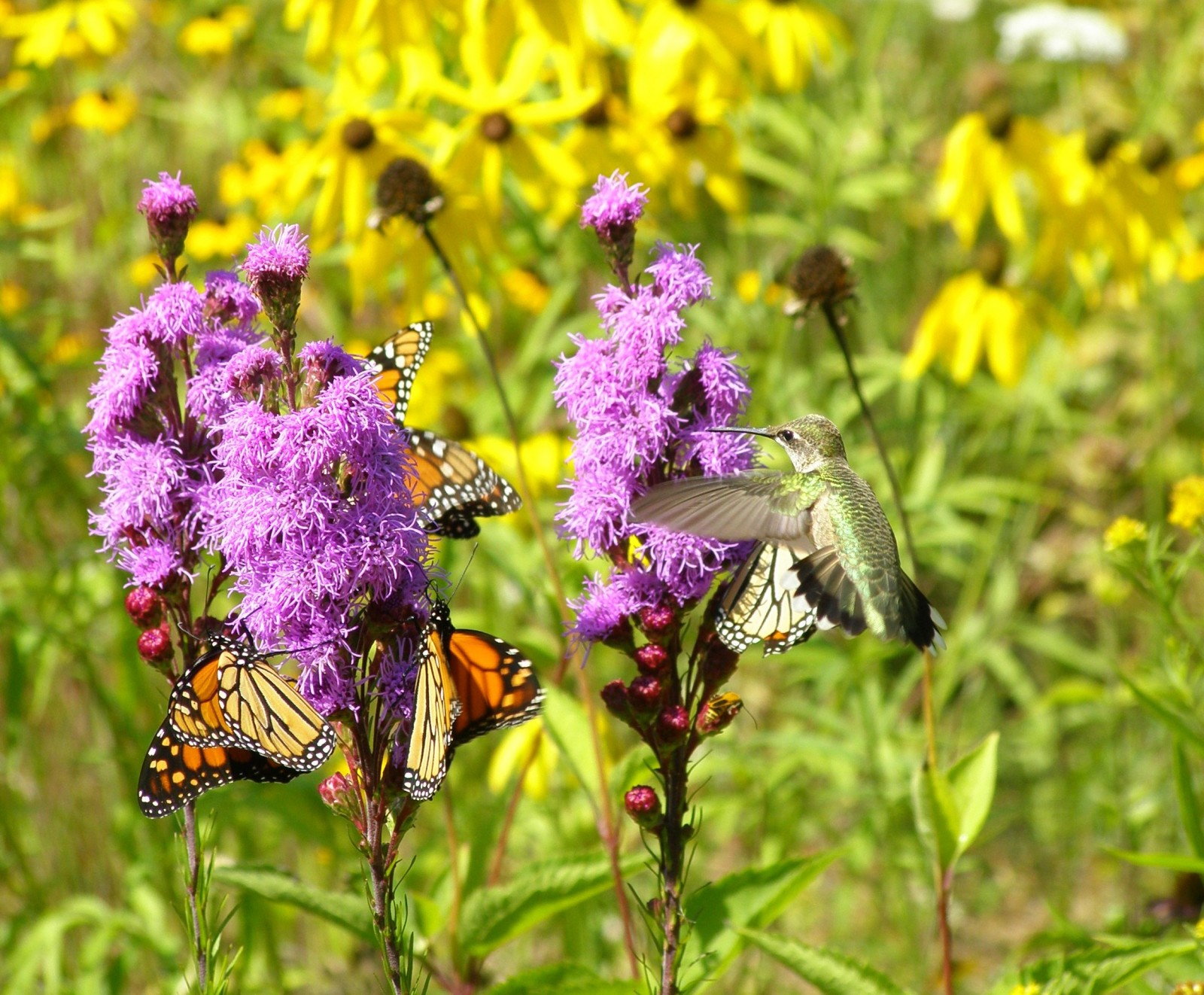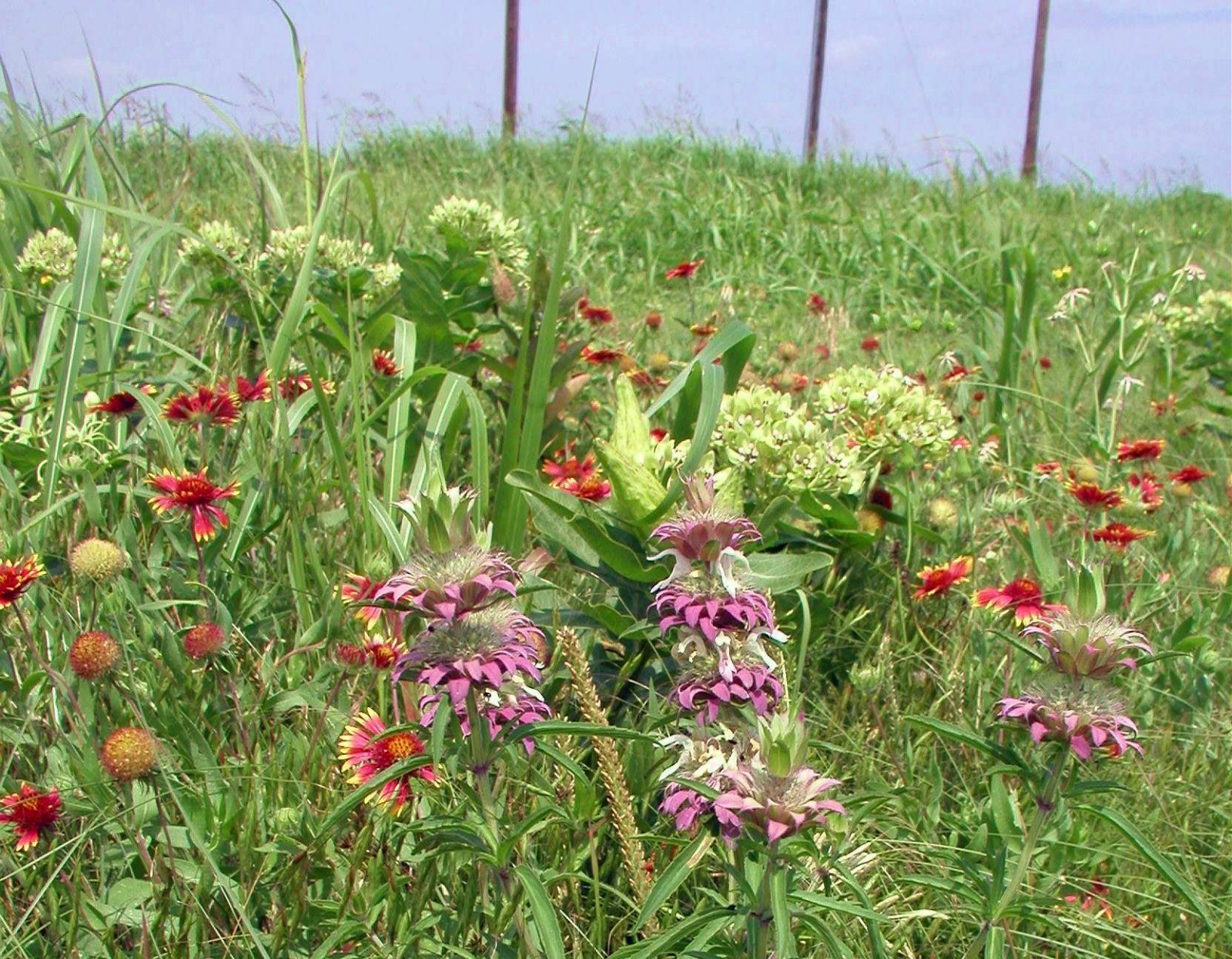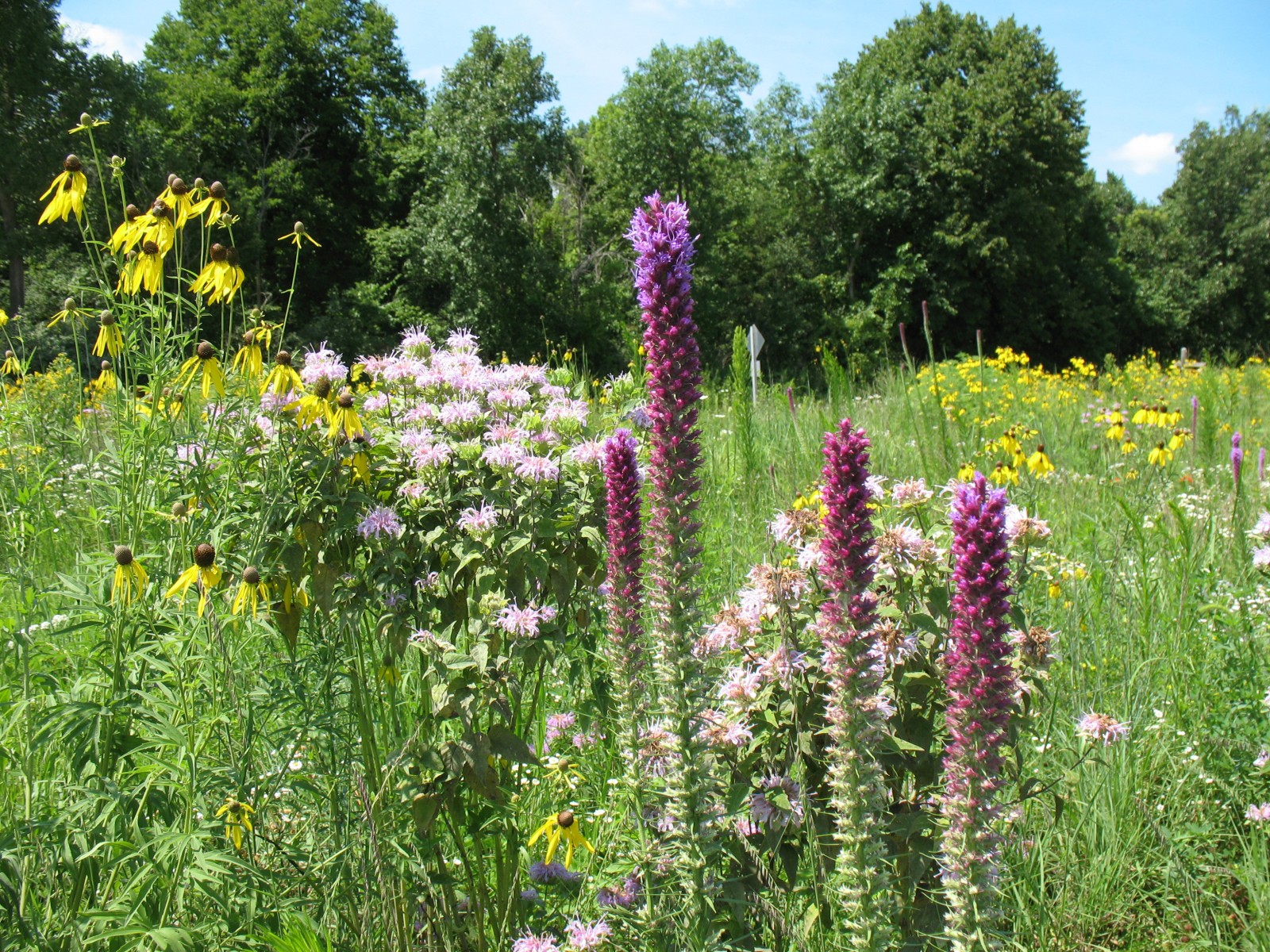Habitat for monarchs can be anywhere as long as milkweed grows there! Here we showcase a few typical habitat types where monarchs and/or milkweed can be found. These include Gardens, Managed Corridors, Agricultural Areas, and Natural and Restored Areas.
Gardens

Vast tracts of land have been converted for human use, including residential areas, parks, schools, and cultural institutions. Butterfly gardens within these developed areas provide much-needed habitat for butterflies. These butterfly havens may be a few square feet within an urban backyard or a larger managed garden attached to an educational institution, cultural center, or a corporate office park.
In addition to their benefits to butterflies and other pollinators, gardens serve to educate children and adults on conservation issues, engage them in scientific inquiry and may lead to increased involvement in conservation activities. Schools are important partners in this effort, as they involve young children in creating and caring for a habitat.
Key components of garden habitat:
- Gardens should be planted in sunny spots, with some protection from the wind.
- At least one milkweed species that is native to the area will provide food for monarch caterpillars.
- Various nectar plants with staggered bloom times give butterflies and other pollinators a continuous food source. Include a combination of early, middle and late blooming species to fuel butterfly breeding and migration.
- Herbicides and pesticides should be avoided, as they can hurt caterpillars and adults.
Additional tips on butterfly gardening can be found at the North American Butterfly Association's guide to butterfly gardening.
Managed Corridors

According to the U.S. Department of Transportation, there are almost 9 million miles of highways in the United States. In addition, there are more than 5 million acres of land within utility rights-of-way. The easements or rights-of-ways that are associated with these linear tracts, when managed appropriately, can provide critical habitat for monarchs and other pollinators.
A typical right-of-way managed for monarchs would include initial removal of invasive and undesirable species, preparation of the surface through tilling and other means, planting of native flowering plants, and management through timed mowing and monitoring.
Key components of managed corridor habitat:
- A mix of native flowers with different bloom times, including some overlap in flowering, ensures a stable food source for butterflies. A combination of early, middle and late blooming species will fuel butterfly breeding and migration.
- Native milkweed to provide food for monarch caterpillars.
- Minimal, well-timed management that limits impacts to all pollinators, including butterflies, while eliminating woody species as needed. Preferably, mowing should be limited to times when plants have died back or are dormant. Mowing at any time (even in the winter) kills insects. In the summer, some insects can’t get away from the mower, especially eggs, and caterpillars. In the winter insects may be dormant in leaf litter or plant stems. Mowing in patches ensures that pollinators can recolonize the mowed areas.
- Avoidance of insecticides.
If needed, minimal, well-timed insecticide applications. If chemicals must be used, choose the least toxic alternative, and apply them early and late in the day, when fewer pollinators are present. Please note that chemicals will kill monarch larvae, if they are present. Herbicides, if required, should be applied with targeted spot treatments instead of a broadcast method. Whenever possible, mechanical removal of shrubs should be used in combination with herbicides to maintain butterfly habitat.
Invasive plant species control by targeted or mechanical means. Invasive plants can compete with native species for resources. Often, invasives win, because they do not have natural enemies in their new environment to keep their numbers in check. Many invasive plants also secrete chemicals into the soil that deter native plants from growing in the area.
Roadways and utility corridors are highly visible areas. Consider adding a sign or informational brochures in highly frequented areas, such as rest stops, to educate the public about your monarch conservation efforts.
For more information on management areas, please visit the Xerces Society’s Pollinators and Roadsides: Managing Roadsides for Bees and Butterflies.
Agricultural Areas

Agricultural fields used to be an important source of milkweed for monarch caterpillars. Milkweed has historically grown alongside crop plants, and provided abundant food for monarch caterpillars. With the introduction of herbicide-tolerant crops, management shifted from a till-based approach to the widespread use of herbicides. This practice has diminished much of the milkweed growing in agricultural areas, since milkweed can survive some tilling, but cannot survive herbicides.
Farmers have an important role to play in the conservation of monarch butterflies. Farms across the continent are adopting pollinator-friendly practices.
Key components of agricultural habitat:
- Native flowers planted in fallow fields, hedgerows, and farm field margins to provide food for butterflies. A combination of early, middle and late blooming species, with overlap in flowering times, will fuel butterfly breeding and migration.
- Native milkweed planted in unused portions of the site to provide food for caterpillars.
- Use of low till and no till farming techniques to allow more milkweed to grow alongside crops.
- Avoidance of pesticides.
- If needed, use minimal, well-timed herbicide applications. If chemicals must be used, choose the least toxic alternative, and apply them early and late in the day, when fewer butterflies are present. Please note that chemicals will kill monarch larvae. Herbicides, if required, should be applied with targeted spot treatments instead of a broadcast method. Whenever possible, mechanical removal of shrubs should be used in combination with herbicides to maintain butterfly habitat.
For additional information on pollinator friendly farming, please refer to Farming for Bees: Guidelines for Providing Native Bee Habitat on Farms created by the Xerces Society.
Natural and Restored Areas

Natural areas include nature preserves, parks, or areas not actively being used for another purpose. Restored areas are lands that have been specifically replanted and re-purposed for conservation.
Natural areas may also be located in high traffic areas. Trail margins in prairie areas, campsites, and picnic areas present opportunities to enhance butterfly breeding and migratory habitat. Natural areas can be enhanced for monarchs using a few simple ideas.
Key components of natural/restored habitat:
- A mix of native flowers with different bloom times, including some overlap in flowering, to ensure a stable food source for butterflies. A combination of early, middle and late blooming species will fuel butterfly breeding and migration.
- Native milkweed to provide food for monarch caterpillars.
- Minimal management, including the avoidance of mowing until butterflies have migrated from the area. It is important to stress that mowing kills insects any time of the year. Mowing in patches ensures that pollinators always have access to undisturbed patches of habitat, and that surviving insects can recolonize the mowed area.
- Avoidance of pesticides; avoid herbicides, except for targeted invasive species control.
For additional information on monarch conservation in natural areas such as parks, visit Parks for Monarchs: A Resource Guide for Monarch Conservation created by the MJV and National Recreation and Park Association.

